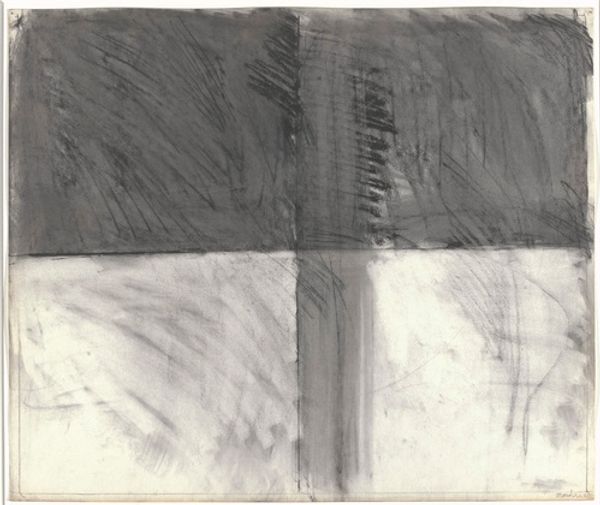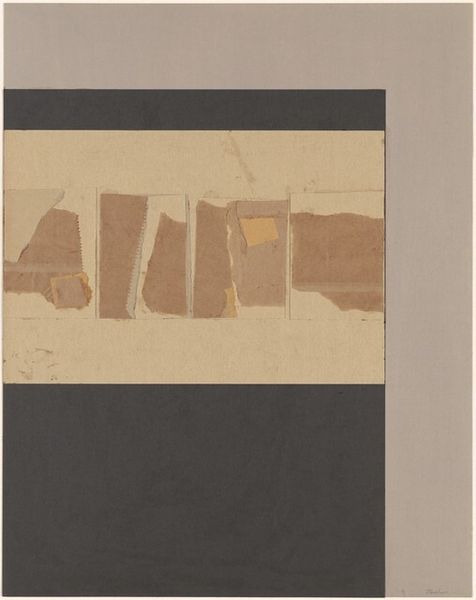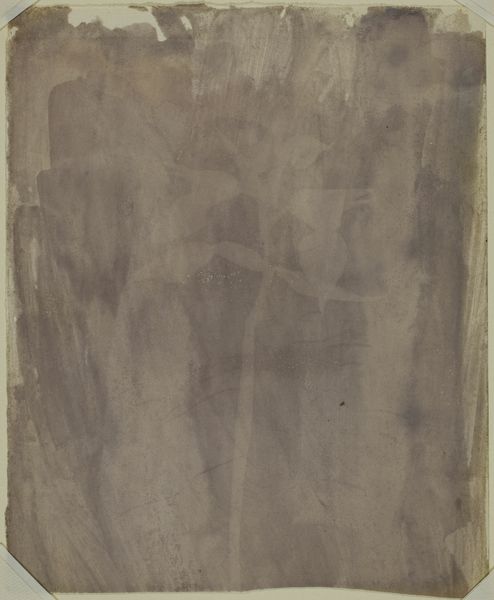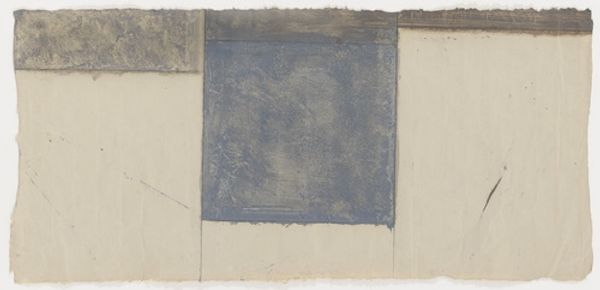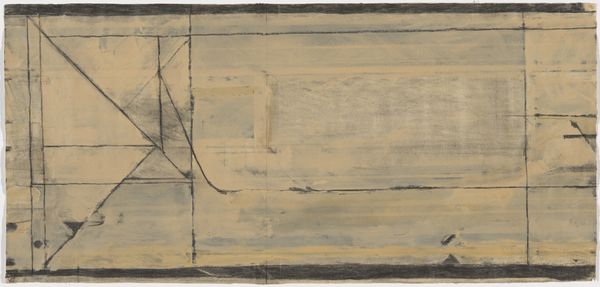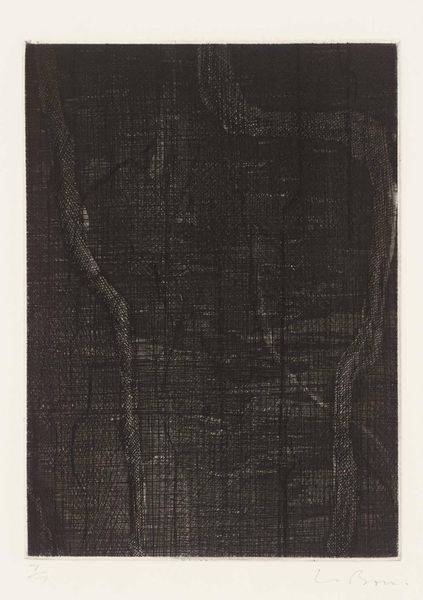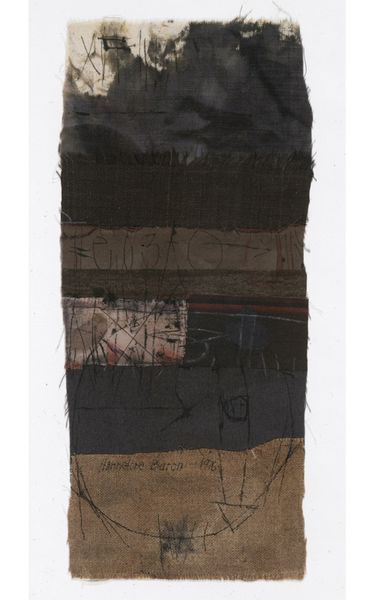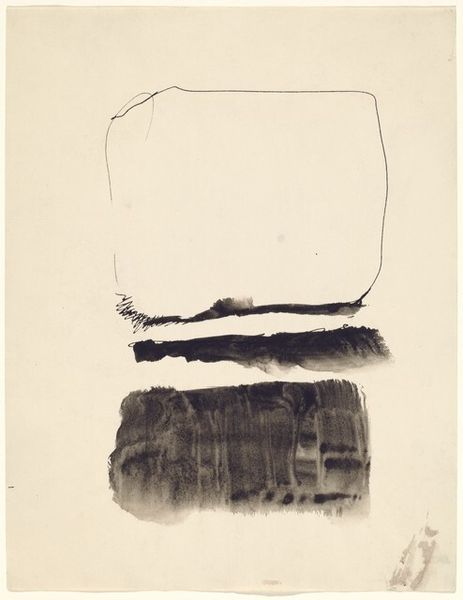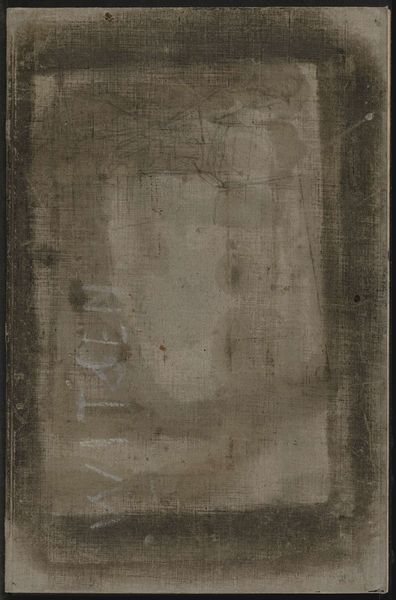
mixed-media, collage, print, textile
#
mixed-media
#
collage
# print
#
textile
#
abstraction
#
mixed media
#
modernism
#
watercolor
Dimensions: height 430 cm, width 328 cm
Copyright: Rijks Museum: Open Domain
Editor: Here we have an arresting textile piece, “Fragment of a Ship Flag,” dating back to about 1658 and currently housed at the Rijksmuseum. It's listed as anonymous. There's something so stark and compelling about its abstract composition; the use of what looks like mixed media or collage also adds to its complexity. How do you interpret this work from a historical perspective? Curator: Given the title and date, consider the historical context of 17th-century maritime power. The Dutch Republic was a dominant force at sea. Fragments like this were not just decorative; flags symbolized national identity, commercial power, and military might. What socio-political message do you think a *ship flag* conveyed at this time? Editor: Power and authority, certainly! The Dutch were major players in global trade then, right? So a tattered flag might represent a ship that has fought wars or been exposed to storms at sea? But it's in a museum! How did such objects find their way into cultural institutions, particularly given the abstract way it has aged? Curator: Precisely! Think about the Rijksmuseum’s role in constructing national narratives. Collecting these fragments wasn't just about preserving objects; it was about preserving memories, framing historical events in ways that legitimized the Dutch state and its colonial endeavors. Is it heroic? Commercial? Or simply "national?" Editor: That's a fascinating idea. So, displaying it allows for the shaping of cultural memory surrounding Dutch maritime history? It presents a curated perspective of this fragment for public viewing. What kind of perspective, though, is more challenging to decide. Curator: Exactly. Museums don't just reflect history; they *produce* it. By isolating and displaying this "Fragment", the museum invites us to contemplate not just a lost piece of fabric, but also the broader narratives of Dutch power and its public legacy. We have been led by both abstraction and social expectation to imbue this image with authority. How interesting is that? Editor: Wow, I never thought of it that way. I suppose that abstraction becomes quite political after the piece is accessioned by an institution. Thanks, this insight has opened my eyes!
Comments
No comments
Be the first to comment and join the conversation on the ultimate creative platform.
